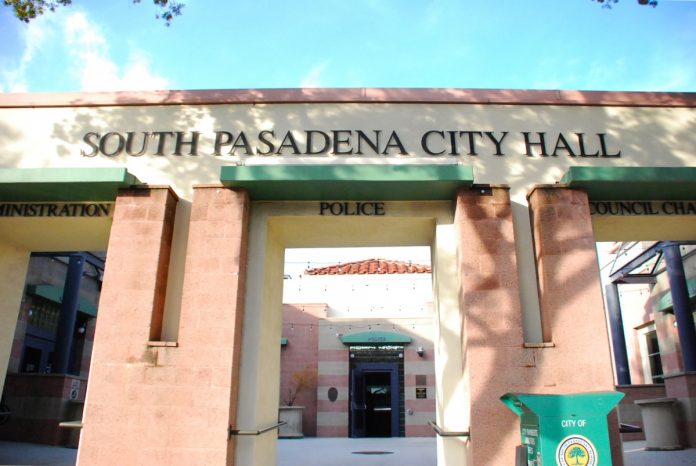It’s a small, obscure provision buried deep in a draft of a county public works ordinance. But it could affect how much South Pasadena and other small cities get from Measure W, the stormwater initiative county voters approved last November which is expected to bring in about $300 million annually through a parcel tax.
County officials say implementation documents afford cities protection, but upon seeing the first draft some weeks ago, South Pasadena District 5 Councilwoman Diana Mahmud launched into action to make sure smaller cities can’t “all be squished like bugs by the city and county of Los Angeles.”
The Measure is meant to create a revenue flow for agencies seeking funds to build storm water reclamation and quality projects.
Some prospective projects, such as detention basins, constructed wetlands and infiltration basins, are capital intensive and will require intense feasibility studies to win approval. Mahmud told the South Pasadena News she’s worried that only larger entities will have sufficient resources to get projects rolling quickly, eating up the annual supply of both capital and operation & maintenance funding while smaller cities’ projects are still being developed.
There’s no question Los Angeles has a head start. The city has already developed a 5-year capital plan listing 59 projects in the Upper Los Angeles River watershed. And in April, it approved $2.2 million to ramp up feasibility studies for those projects, pending receipt of its share of the first round of Measure W funds early next year. “In order to be competitive,” L. A. city staff wrote in March, “it is critical that [the city] prepare feasibility studies for the projects” it wants approved.
South Pasadena, by contrast, is “starting from scratch,” Mahmud said. It has two stormwater projects listed on its newly-approved Capital Improvement Plan: one that is still in the conception phase and another that is so expensive, the city has been looking at ways to ramp it up more slowly by starting with a smaller variation. Even though the city will be getting its first injection of Measure W money this spring, it has budgeted less than half of it for capital work.
The new rules will create three pots of money. Forty percent of the proceeds will be divvied up directly among individual cities. South Pasadena, for example, will get $260,000 compared to the City of Los Angeles, which will get $39.33 million. Another 50 percent of the proceeds will be distributed by the county to nine watershed area steering committees (WASCs). The largest of these will be the Upper Los Angeles River WASC, which will include the City of Los Angeles and 11 other cities, including South Pasadena. The ULAR WASC will be allocated $41.1 million—more than any other. But like the others its members will have to compete and negotiate among themselves to develop a plan listing which projects they want the county to approve.
Each WASC will have 17 members with seven designated for cities. But since three-quarters of the ULAR watershed is in Los Angeles, it automatically gets three of those seats. The dozen other cities in the ULAR WASC must select among themselves which will hold the four remaining seats. The selections have already been made: Glendale, Pasadena and La Canada-Flintridge each got one seat, while the fourth went to an unincorporated community. South Pasadena, Alhambra, Burbank and the other cities did not get seats.
In addition, four of the remaining ten seats on the ULAR WASC—more than any other WASC–will be held by City of Los Angeles agencies including Water & Power, Sanitation and Recreation & Parks. Another seat will be held by the Los Angeles Flood Control District, which will also get the remaining 10 percent of the Measure W money from the third pot.
Mahmud first raised concern with the county over a draft provision in the rules that called for a 10-year review of the equitable division of Measure W funds. That’s too long, she said, because by the time the review takes place, many projects will already be under way. She said she “make a stink” about this with the county and in the new draft released late last month, the review period was reduced to five years.
LA County Senior Civil Engineer Matt Frary told the South Pasadena News the county agreed to the change because it concluded the shorter term would not adversely affect any other stakeholder’s interest.
The modification was good news, but on June 10, while chairing the water committee of the San Gabriel Valley Council of Governments (SGVCOG), Mahmud said she still had concerns about many aspects of the proposed rules and guidelines.
For one thing, the Measure W implementation documents need to better align with the stormwater projects developed under the Enhanced Water Management Program, which in turn stems from the need to meet the requirements of a county-wide, state-issued permit that requires planning to ensure storm water quality. The so-called EWMP is barely mentioned in the Measure W implementation documents.
Mahmud also believes the county is “seriously underestimating” the amount of work that will be needed to help cities comply with the highly technical feasibility criteria and elaborate procedural reviews to which project applications will be subjected. She’s concerned over details of the parcel tax credit program and says the county is planning to combine “almost incompatible” skills into the job requirements for a group of “watershed coordinators” who will be hired to help each WASC with both technical and outreach efforts.
The SGVCOG was expected to file comments on these and other matters with the county by the June 21 deadline.















.png)







